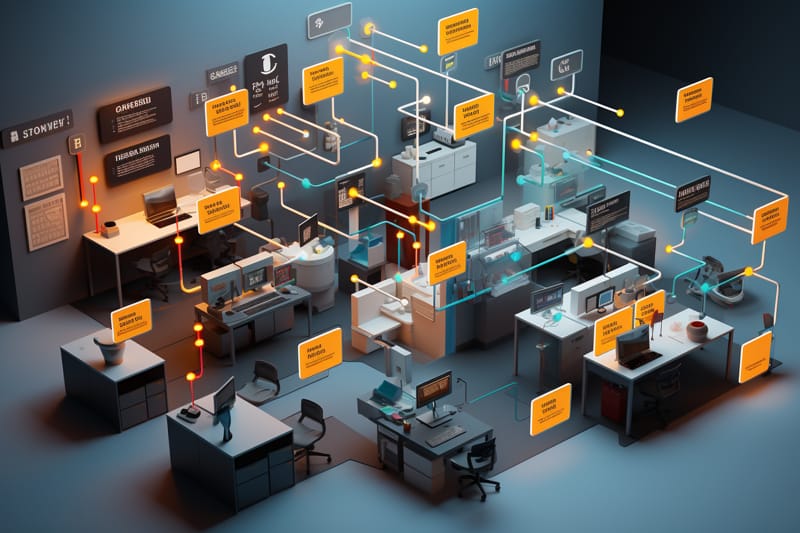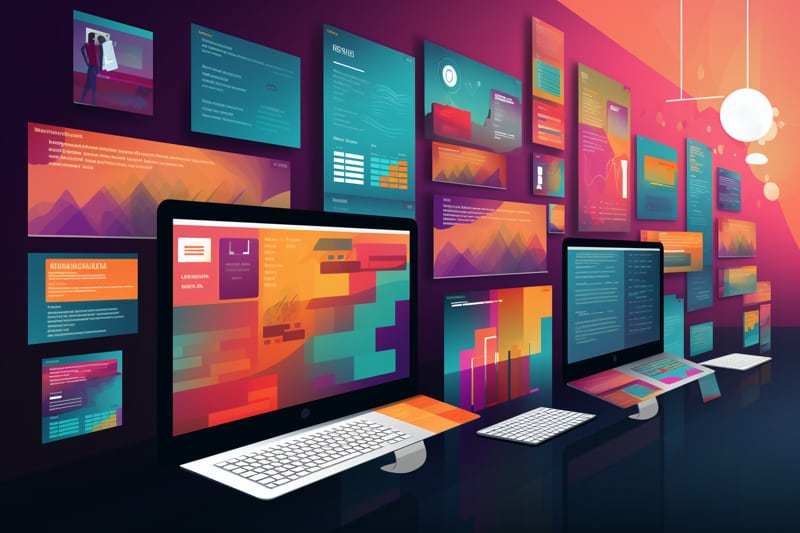Swagger Interview Questions
Swagger (OpenAPI Specification) is an increasingly popular format for defining RESTful APIs, providing developers with an efficient means of understanding and interacting with APIs more quickly and easily.
It outlines endpoints, request/response formats and security schemes of an API allowing for easier interaction by developers with its endpoints, request formats and security schemes.
Swagger offers an open-source suite of tools that enable API designers, builders, documentors and testers to design, document and test APIs quickly.
In this blog post, we’ll take a look at some common interview questions regarding Swagger, along with their responses.

1.What is Swagger?
Swagger is a tool used to generate documentation for web services and perform testing for other A P I’s.
2.What is the purpose of the workshop on Swagger?
The purpose of the workshop on Swagger is to cover the introduction, purpose, annotations, and configuration of Swagger in a Spring Boot application.
3.Tell about the purpose of Swagger.?
The purpose of Swagger is to provide documentation about the rest A P I, allowing the client to develop their client logic according to the provided documentation.
4.Is Swagger used only for documentation or does it have other uses?
Swagger is used not only for documentation but also for testing APIs.
5.List out the difference between the VISTAL file and Swagger in SOAP web services?
In SOAP web services, the provider details are provided in the VISTAL file, which is an XML file used for SOAP web services. In RESTful services, documentation of A P I is generated using Swagger, which generates documentation in JSON format.
6.Mention use of Swagger in REST client development?
The client set team uses Swagger to develop a REST client.
7.What is the use of Swagger UI in API testing?
Swagger UI is available on the US screen, allowing for post-demand testing of APIs.
8.Identify the difference between RESTful services and SOAP web services.?
In RESTful services, documentation of A P I is generated using Swagger, while in SOAP web services, documentation of A P I is provided in the VISTAL file.
9.What is the purpose of the Swing API for the flight ticket booking system?
The purpose of the Swing API for the flight ticket booking system is to create a ticket with a status code and bind it to a post-mapping slash. The passenger info is then sent in the request body, which is then sent back as a response.
10.Describe the project package structure for the Swing API.
The project package structure for the Swing API includes a request binding class, a response ticket info class, and a best controller. Clients can send passenger data to the rest API, which then puts the ticket and sends the ticket information back as a response.
11.Explain the components of the request binding class in the Swing API?
The components of the request binding class in the Swing API include a request body annotation, a response entity, and a satellite initializer class.
12.What is the purpose of the request body annotation in the Swing API?
The purpose of the request body annotation in the Swing API is to specify the data that is sent in the request body.
13.Describe response entity in the Swing API?
The purpose of the response entity in the Swing API is to specify the data that is returned as a response.
14.What is the purpose of using the Swagger UI instead of manual data entry in the Swing API?
The purpose of using the Swagger UI instead of manual data entry in the Swing API is to simplify the process of testing the API by automatically generating documentation and test cases.
15.What is the use of creating a new class called Swagger Conflict in the Swing API?
The purpose of creating a new class called Swagger Conflict in the Swing API is to handle any conflicts that may arise when using the Swagger UI to configure the API.
16.How is the Swagger Conflict class represented as a configuration class in the Spring?
The Swagger Conflict class is represented as a configuration class in the Spring by using a computation call at the configuration annotation.
17.When using the Swing API, how can I enable swagger configuration?
Swagger configuration is enabled in the Swing API by calling the rate enable swagger method to generate enable swagger.
18.What is the advantage of using Swagger?
One advantage of using Swagger is that it provides a clear understanding of the data needed to send, the U R L pattern, and the type of request.

SAP Hybris Training

The Swaggery UI is a dependency that allows clients to access information about the resource’s response formats and consumes it in either XML or JSON formats.
21.What does the Swaggery UI provide?
The Swaggery UI provides detailed information about the resource’s input structure, output structure, and output formats.
22.How is the Swaggery UI more user-friendly than postman?
The Swaggery UI is more user-friendly than postman, as it allows clients to easily understand the input format, input type, output format, and output format for their resource.
23.Mention the usage of Swagger Documentation?
Swagger documentation is a tool used to generate plain documentation for APIs in the JSON format.
24.How can Swagger documentation be generated?
Swagger documentation can be generated using the Swaggery URL or the Swabber US screen.
25.What is the purpose of the Swabber US screen?
The Swabber US screen provides more user-friendly information about the API, while the JSON file provides plain JSON data.
26.Give detailed architecture of a distributed application?
The architecture of a distributed application consists of two actors: a provider and a consumer.
27.What is the communication between providers and consumers in a distributed application?
The communication between providers and consumers in a distributed application is done using web services or RESTful services.
28.Describe the scenario involving an application developed by TCS?
The scenario involves an application developed by TCS that has a database containing all Indian other details. This database is managed by TCS, and the application is connected to another project, such as a passport application. When a person wants to apply for a passport, the passport application asks for
29.Define distributed applications?
Distributed applications are those that communicate with other applications, using either SO-based web services or RESTful services.

SAP Hybris Online Training

30.What are provider applications?
Provider applications are those that provide business services to other applications.
31.specifyconsumer applications?
Consumer applications are those that access services from other applications.
32.What is the distributed application architecture?
The distributed application architecture consists of two actors: a provider and a consumer.
33.What programming languages are used for provider applications?
Provider applications are developed using Java and Azure.

34.Tell about languages used for consumer applications?
Consumer applications use Python.
35.What communication style aligns with the human communication style?
An approach that aligns with the human communication style is where humans communicate in various languages.
Now its quiz time! lets give it a try with MCQ’S
1.What is Vista?
A Java class with several methods that can be used in a project or not
Language used to describe web services
Tool used to generate documentation for web services and perform testing for other APIs
An XML format used to describe web services
2.In a sample Vista, what is the service section?
The class names and class names representing interfaces or classes
Binding section details the protocol needed to access the provider
The port type section is an interface or class within the provider
Message section explains the input and output messages
3.What is the role of a RESTful service in the market?
Capture temperature information from satellites
To provide business services to other applications
Communicate with the satellite directly or through a business partnership
To provide documentation for web services and perform testing for other APIs
4.What is the purpose of Swagger?
To provide documentation about the REST API
Generate documentation for web services and perform testing for other APIs
For test RST APIs
Provide documentation about the component
5.What is a postman?
Tool used to test REST APIs
A Java class with several methods that can be used in a project or not
Language used to describe web services
A distributed application architecture consisting of two actors: a provider and a consumer
6.In the scenario given, what is the goal of the TCS project?
To ensure that the two applications communicate effectively, allowing for efficient and accurate registration and verification of information
To develop a Python application that is a provider application
To develop a Java application that is a consumer application
To develop a Java application that provides business services to other applications
7.What is used to test the API within the described project?
Spring Tool Suite ID
Postman
Maven Central repository
Swagger UI
8.What is the tool used to generate documentation for REST AP Is?
Postman
Maven
Spring Tool Suite ID
Swagger
9.Which tool provides a more user-friendly interface for clients to understand API capabilities?
Postman
Swagger UI
Maven Central repository
Spring Tool Suite ID
In summation, Swagger is an invaluable and widely adopted technology for API documentation and testing.
With its user-friendly specification format and a suite of open-source tools available at its disposal, it has quickly become essential to any developer working on RESTful APIs.
We hope the interview questions we covered in this blog post have enabled you to hone your understanding of Swagger and be prepared for your next technology interview.
Thank you for reading our interview questions blog on Swagger!
We wish you the best in any technology interviews that may come your way and hope these resources prove to help meet them head-on!

SAP Hybris Course Price


Harsha Vardhani
Author